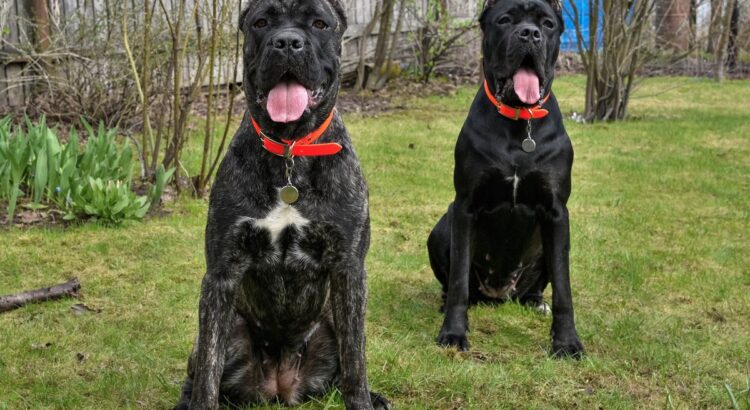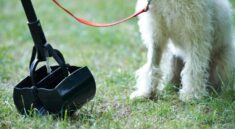In the United Kingdom, families often prioritize the safety and security of their loved ones and their property. When it comes to ensuring protection, two popular options are personal protection dogs and guard dogs. While both types of dogs play a vital role in safeguarding, there are distinct differences between them. In this article, we will explore the contrasting characteristics, training methods, and roles of personal protection dogs and guard dogs. By understanding these nuances, families can make informed decisions about which type of canine companion best suits their specific security needs.
Personal Protection Dogs – A Trusted Guardian for Families
Total K9 advises that personal protection dogs are highly trained canines that serve as reliable protectors for individuals, families, or properties. These dogs are bred and trained to assess and respond to potential threats. They possess a unique blend of qualities, including intelligence, loyalty, and courage.
Unlike guard dogs, personal protection dogs are not limited to protecting fixed locations. They provide mobile security and accompany their owners wherever they go. These dogs are trained to remain calm in high-pressure situations and respond to commands given by their handlers. Personal protection dogs develop a strong bond with their owners and are known for their protective nature.
The training process for personal protection dogs is rigorous and specialized. They undergo extensive training to develop their skills in detecting and assessing threats. They learn to differentiate between normal and suspicious behaviors, ensuring a proactive approach to security. These dogs can quickly identify potential dangers and take appropriate action to deter or neutralize threats, keeping their owners safe.
Guard Dogs – An Integral Part of Security Systems
Guard dogs are specifically trained to protect properties, such as homes, businesses, or public spaces. They serve as a visible deterrent to potential intruders and are an essential component of security systems. These dogs are known for their loyalty, territorial instincts, and protective nature.
TOTAL K9 UK says that unlike personal protection dogs, guard dogs are primarily focused on safeguarding fixed locations. They are trained to patrol designated areas, alert their handlers to potential threats, and respond to commands effectively. Guard dogs become familiar with their assigned territory and develop a strong sense of ownership and protection towards it.
Training guard dogs involves teaching them to follow strict routines and protocols. They are trained to recognize and respond to specific commands related to their duties. Guard dogs excel at monitoring perimeters, identifying intruders, and providing vocal warnings to deter unauthorized individuals. Their presence alone often discourages potential intruders from attempting to breach the property.
Key Differences between Personal Protection Dogs and Guard Dogs
The primary difference between personal protection dogs and guard dogs lies in their focus and purpose. Personal protection dogs are primarily trained to safeguard individuals or families, providing security wherever they go. They are versatile companions that can accompany their owners on walks, outings, or even travel, offering a constant source of protection.
Guard dogs, on the other hand, are trained to protect fixed locations. They are deployed to secure residences, commercial properties, or other specific areas that require continuous surveillance. Guard dogs excel at maintaining the security of the premises they are assigned to, ensuring the safety of the property and deterring potential intruders.
The training methods employed for personal protection dogs and guard dogs also differ. Personal protection dogs are trained to respond to specific commands from their owners and are often integrated into their daily lives. Their training involves not only security-related commands but also obedience training to ensure they can effectively carry out their duties while maintaining good behavior in various environments.
Guard dogs, however, follow strict routines and protocols. They are trained to perform tasks related to their assigned location, such as patrolling certain areas or guarding specific points of entry. The training focuses on developing their guarding instincts, strengthening their territorial behavior, and refining their response to potential threats within their designated territory.
Another notable distinction is how personal protection dogs and guard dogs interact with strangers. Personal protection dogs are often cautious and reserved when encountering unfamiliar individuals, as they prioritize their owner’s safety. They are trained to assess potential threats and act accordingly. While they can be friendly and sociable in appropriate situations, their primary purpose is to provide protection.
In contrast, guard dogs are trained to be more assertive and vigilant in their interactions with strangers. They display a strong presence and assert their authority when necessary. Guard dogs are trained to deter potential intruders through their presence and vocal warnings. Their ability to distinguish between harmless visitors and potential threats is crucial for maintaining security.
Choosing the Right Canine Companion
When deciding between a personal protection dog and a guard dog, it is crucial to assess individual security needs. Families who require constant personal protection may find a personal protection dog more suitable. These dogs offer a mobile security solution and become integral parts of the family, ensuring the safety of all family members in various settings.
On the other hand, those seeking to secure their properties or businesses may benefit from a trained guard dog. Guard dogs provide a visible deterrent and contribute to the overall security system. Their presence alone can discourage potential intruders, reducing the risk of theft, vandalism, or other security breaches.
Assessing individual needs and consulting with reputable dog trainers and security experts can be invaluable when making this decision. These professionals can evaluate specific requirements, assess the environment, and recommend the appropriate type of dog based on individual circumstances. Additionally, they can provide ongoing support and guidance to ensure a successful integration of the chosen canine companion into the family or security system.
Conclusion:
Both personal protection dogs and guard dogs play vital roles in ensuring the safety and security of individuals, families, and properties. Personal protection dogs offer mobile protection and are versatile companions that can accompany their owners in various situations. Guard dogs, on the other hand, focus on safeguarding fixed locations, providing a visible deterrent and maintaining the security of the premises.
By understanding the differences between personal protection dogs and guard dogs, families can make informed decisions that align with their unique security needs. Whether it’s constant personal protection or securing properties, welcoming the right canine companion into their lives empowers families to enhance their overall security measures and gain peace of mind knowing their loved ones and their property are well-protected.





